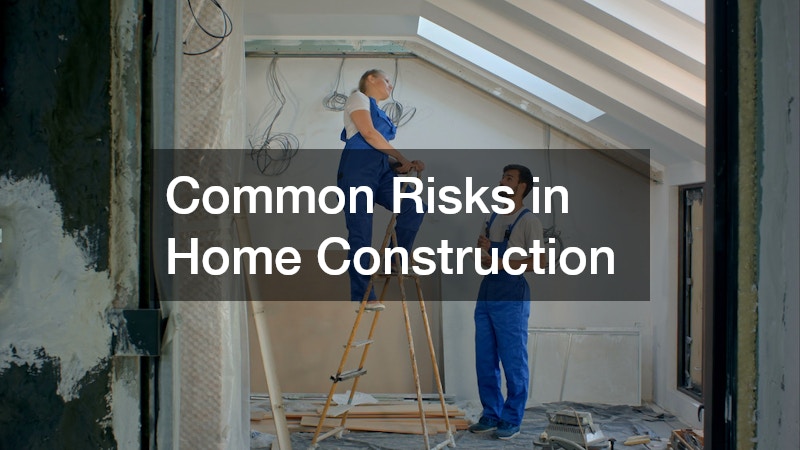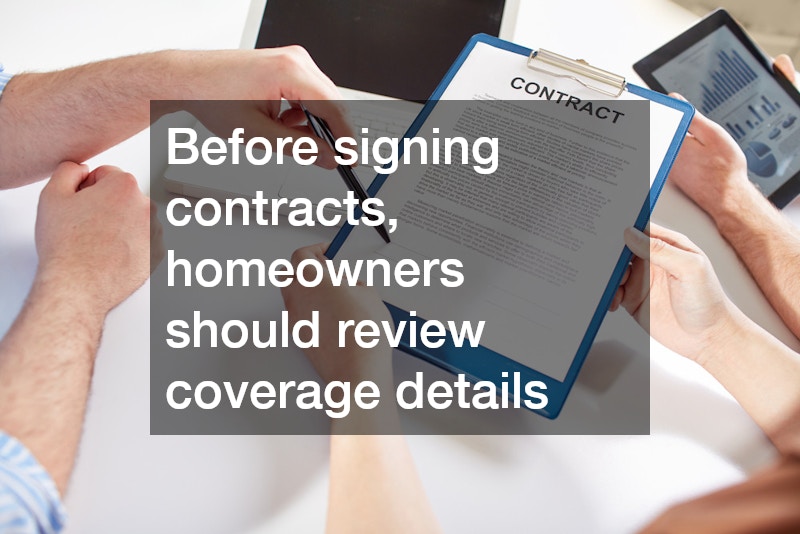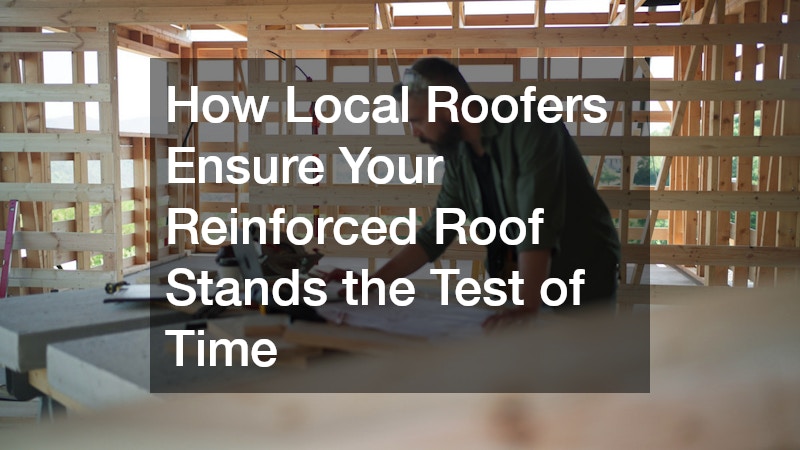-
Insured homebuilders protect you from theft, fire, and weather damage.
-
Builder’s risk, liability, and workers’ comp are essential coverage.
-
Accidents or lawsuits on-site won’t derail your finances.
-
Some risks—like floods or poor workmanship—need extra protection.
-
Always check insurance coverage, subcontractor protection, and limits.
-
Security and safety measures reduce the chance of costly claims.
-
Hiring licensed and insured homebuilders keeps your project on track.

Building or renovating a home is one of the biggest investments most people will ever make. It’s a process filled with excitement, creativity, and anticipation, but it also comes with unavoidable risks. Construction sites are unpredictable environments. Fires, theft, accidents, and weather-related damage can derail progress and inflate costs in a matter of hours. Even with careful planning and skilled professionals, there are countless moving parts that can go wrong. This is why working with insured homebuilders is so important. These professionals carry specialized insurance policies that protect both themselves and homeowners, ensuring that unexpected events don’t turn into financial disasters.
When a contractor has adequate coverage, it means that damage to materials, accidents involving workers, or lawsuits related to the project won’t fall on the homeowner’s shoulders. In this article, we’ll take a close look at the most common risks in home construction and explain how insurance policies safeguard projects. We’ll also highlight the benefits homeowners gain when they choose to work with insured homebuilders and outline key questions to ask before hiring one.
What Is Home Builder Insurance and Why It Matters
Home builder insurance is not a single policy but rather a combination of coverages designed to address risks unique to construction. While homeowners insurance is meant to protect a finished residence, home builder insurance applies during the building phase, when the structure is most vulnerable.
Most licensed and insured homebuilders carry three core types of protection:
-
Builder’s risk insurance – Covers damage to the home under construction, including materials, tools, and partially completed structures. It protects against perils such as fire, theft, vandalism, and certain weather events.
-
General liability insurance – Protects against lawsuits and claims for bodily injury or property damage involving third parties, such as neighbors or delivery drivers.
-
Workers’ compensation insurance – Provides medical care and wage replacement for employees injured on the job, while protecting homeowners from being held liable.
Some contractors also carry commercial auto insurance for company vehicles and equipment insurance for expensive machinery. Collectively, these policies provide a safety net that prevents small issues from becoming devastating financial setbacks. For homeowners, hiring insured homebuilders means you are entrusting your project to professionals who take risk management seriously.
Common Risks in Home Construction (and How Insurance Covers Them)
Every construction project faces risks, no matter the size or scope. While some problems can be minimized through safety protocols and planning, others are unavoidable. Below are the most common risks encountered during home construction and how insurance helps mitigate them.
Fire and Weather-Related Damage
Few things are as destructive to a construction site as fire or severe weather. Homes under construction are especially vulnerable because they lack the full protection of roofing, siding, and insulation. Materials may be exposed, wiring may not be complete, and protective barriers are often temporary.
-
Examples of fire or weather risks:
-
Exposed electrical systems spark a fire that spreads rapidly through wooden framing.
-
A severe storm damages roofing materials and allows rainwater to ruin insulation and drywall.
-
Strong winds knock over scaffolding, damaging both the structure and nearby property.
-
Lightning strikes the roof, igniting partially installed shingles.
-
-
How insurance protects homeowners:
-
Builder’s risk insurance reimburses the cost of repairing or replacing damaged materials.
-
Some policies cover debris removal, which can be surprisingly expensive after major events.
-
Coverage ensures that repairs do not come directly from the homeowner’s pocket, keeping the project on track financially.
-
Homeowners should note that not all natural disasters are automatically included. Floods, earthquakes, and hurricanes often require separate coverage, so it’s wise to confirm these details when reviewing an insured homebuilder’s policy.
Theft and Vandalism
Unfortunately, theft and vandalism are common on construction sites. Valuable materials and equipment often sit unguarded overnight, making them tempting targets.
-
Examples of theft or vandalism risks:
-
Copper wiring is stolen before electrical installation is complete.
-
Appliances and fixtures disappear from the jobsite the night before they are to be installed.
-
Tools and power equipment are stolen from storage sheds.
-
Vandals spray graffiti or damage framing out of malice.
-
-
How insurance protects homeowners:
-
Builder’s risk insurance covers stolen or vandalized items, ensuring replacements can be purchased without delay.
-
Some policies include coverage for temporary site structures such as fences and scaffolding.
-
-
Prevention strategies used by insured homebuilders:
-
Installing motion-detection lighting and temporary security cameras.
-
Locking away tools and materials in reinforced storage units.
-
Scheduling deliveries strategically to avoid leaving high-value items uninstalled overnight.
-
Using fencing to limit access to the construction site.
-
By hiring insured homebuilders, homeowners gain peace of mind knowing theft or vandalism won’t result in unexpected bills or months-long delays.
Accidents and Worker Injuries
Construction sites are inherently dangerous. Workers deal with ladders, scaffolding, heavy machinery, and sharp tools every day, all of which increase the risk of injury. When accidents happen, uninsured contractors can leave homeowners financially exposed.
-
Examples of injury risks:
-
A subcontractor falls from scaffolding and requires surgery.
-
A carpenter cuts their hand and cannot work for several weeks.
-
A laborer suffers heat exhaustion while working outdoors in high temperatures.
-
-
How insurance protects homeowners:
-
Workers’ compensation insurance covers medical bills and lost wages, keeping homeowners out of the legal crosshairs.
-
General liability insurance provides coverage if a third party, such as a delivery driver or neighbor, is injured on the jobsite.
-
This is one of the clearest reasons why insured homebuilders are the only safe choice. Without proper coverage, an accident could turn into a lawsuit, and the homeowner could end up bearing responsibility.
Structural Damage
Even when following best practices, mistakes or unforeseen circumstances can cause structural issues during construction. These problems are often costly and can affect the safety and integrity of the home.
-
Examples of structural risks:
-
Improperly supported walls collapse in high winds.
-
A cracked foundation results from poor soil preparation.
-
A crane accident damages both the home’s framework and nearby property.
-
-
How insurance protects homeowners:
-
Builder’s risk policies cover repairs to the structure under construction.
-
Liability coverage applies if neighboring property is damaged in the process.
-
Asking insured homebuilders about their liability limits ensures that coverage extends beyond the immediate construction site, protecting both the project and surrounding properties.
Equipment and Machinery Damage
Large equipment is essential for building projects, but it’s also expensive to repair or replace. Malfunctions or theft of machinery can bring construction to a standstill.
-
Examples of equipment risks:
-
A rented backhoe tips over and is badly damaged.
-
A generator powering the site is stolen overnight.
-
A crane breaks down mid-operation, delaying framing.
-
-
How insurance protects homeowners:
-
Many builder’s risk policies include equipment coverage.
-
Some insured homebuilders carry separate policies for high-value tools and rented machinery.
-
This coverage keeps projects moving forward even when expensive equipment fails.
Legal Liability and Third-Party Claims
Construction sites affect more than just workers. Neighbors, inspectors, and delivery drivers often enter or pass by, and accidents can happen.
-
Examples of third-party risks:
-
A neighbor trips on debris while visiting the site.
-
A delivery driver slips on wet ground and breaks a leg.
-
Falling materials damage a nearby parked vehicle.
-
-
How insurance protects homeowners:
-
Liability insurance covers medical bills, repair costs, and legal defense if claims are filed.
-
Homeowners avoid being personally named in lawsuits.
-
When comparing contractors, always verify that insured homebuilders carry adequate liability coverage, not just the state minimum. Larger projects warrant higher limits.
How Homeowners Benefit from Working with Insured Homebuilders
Hiring insured homebuilders isn’t just about protecting contractors; it directly safeguards homeowners too. With the right policies in place, you won’t be left paying for theft, repairs, or legal fees if something goes wrong.
-
Protects your finances from unexpected setbacks like theft or fire.
-
Ensures projects can continue even after costly delays.
-
Shields you from liability if someone is injured on-site.
-
Provides confidence that risks are being managed responsibly.
Without insurance, even a single incident could derail a project and drain savings. With insured professionals, those risks are absorbed by policies designed to handle them.
Key Coverage Gaps Homeowners Should Know
While insurance is essential, it’s important to understand its limits. Not all risks are automatically included.
-
Natural disasters like floods and earthquakes often require separate coverage.
-
Faulty workmanship or poor design is rarely covered.
-
Uninsured subcontractors may leave gaps in protection.
-
Low policy limits may not be sufficient for larger or custom homes.
Before signing contracts, homeowners should review coverage details and ask for proof of insurance certificates.
What to Ask Before Hiring a Builder
To make sure you’re choosing insured homebuilders with adequate protection, ask these questions during the hiring process:
-
What types of insurance do you carry?
-
Can you provide a current certificate of insurance?
-
Do your policies cover subcontractors?
-
What exclusions should I know about?
-
What are your liability coverage limits?
These questions help confirm that your contractor isn’t cutting corners on risk management.
Home construction carries unavoidable risks, from fire and theft to worker injuries and liability claims. While no one can eliminate these hazards entirely, working with insured homebuilders ensures that they are managed effectively. Comprehensive insurance protects both the contractor and the homeowner, keeping projects on track and shielding finances from costly surprises.
By understanding the risks, knowing what coverage to look for, and asking the right questions before hiring a builder, homeowners can enjoy the excitement of building or renovating without the constant worry of unexpected setbacks. In short, insured homebuilders don’t just build homes—they build peace of mind.

